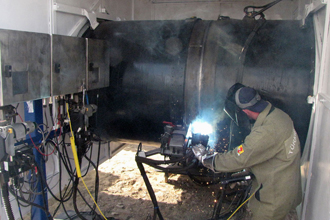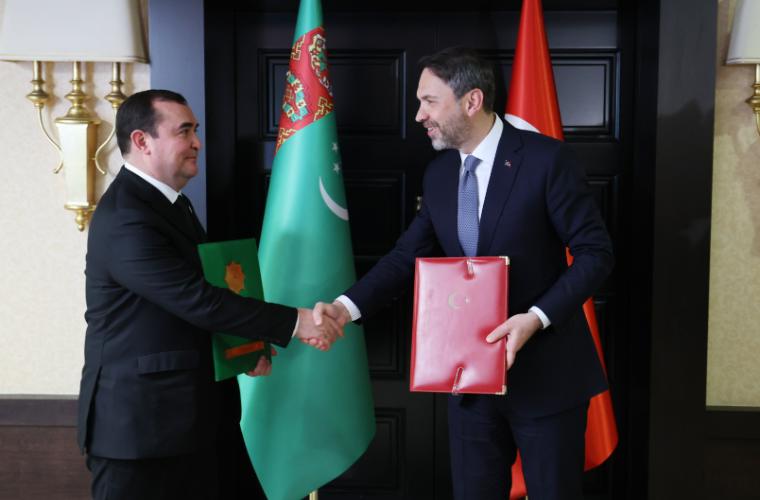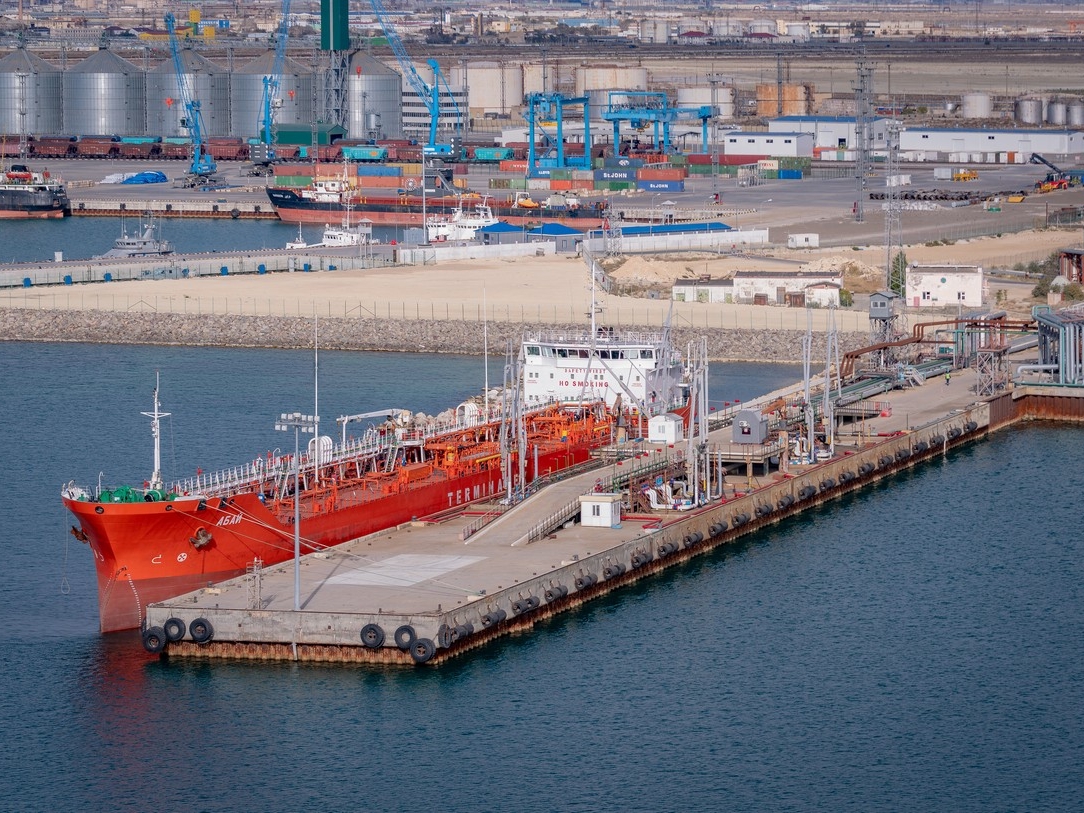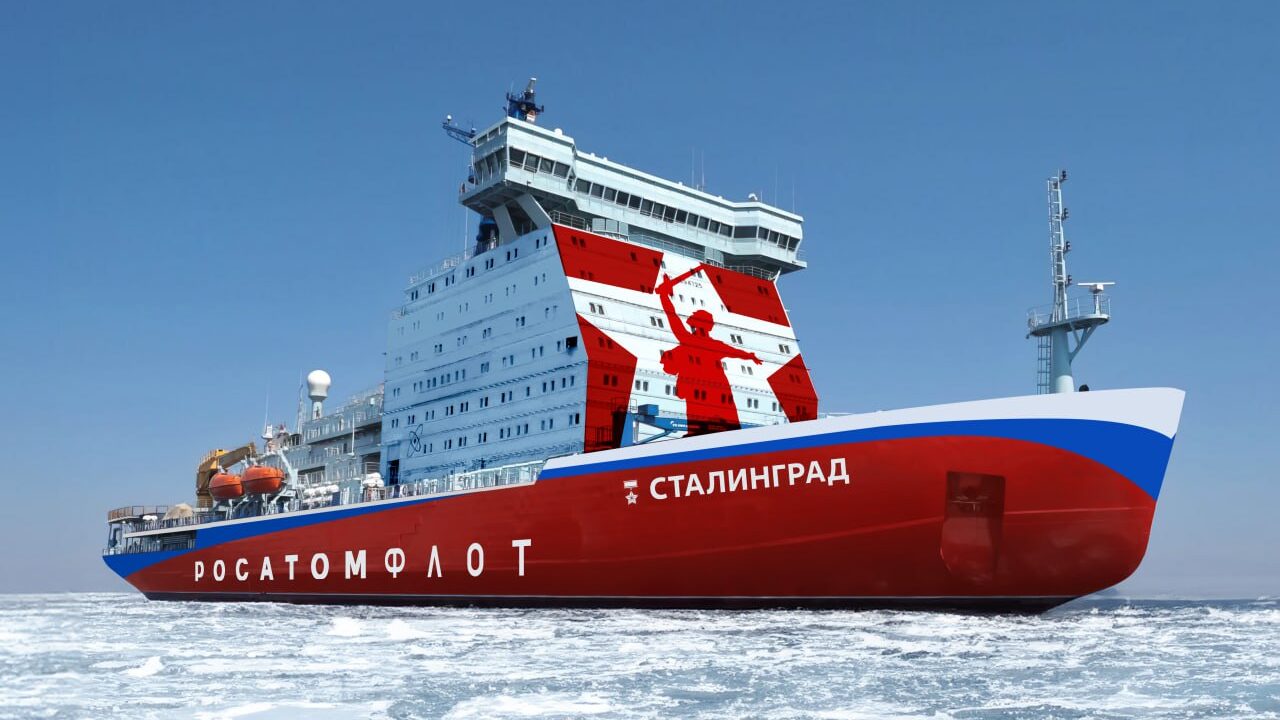
Turkmenistan Starts Construction of East-West Pipeline
Turkmenistan Starts Construction of East-West Pipeline
Construction work began on May 31 on Turkmenistan’s East-West pipeline. The line is projected to run from the main gas fields in the country’s east, to the Turkmen Caspian shore in the west. When completed, the East-West pipeline would deliver gas volumes for export to Europe, along with volumes from the Turkmen offshore.
Turkmenistan’s East-West pipeline can decisively boost the European Union-backed Nabucco and other pipeline projects within the EU-planned Southern Corridor. This assumes a trans-Caspian transportation solution to be developed organically, by connecting the elements of existing offshore infrastructure from Turkmenistan to Azerbaijan.
President Gurbanguly Berdimuhamedov attended the May 31 ceremony to lay the first tubes of the East-West Pipeline at Shatlyk, a compressor station that marks the pipeline’s starting point in the east. Berdimuhamedov had signed only ten days earlier the presidential decision to start construction work on the project (www.turkmenistan.gov, May 21).
According to Berdimuhamedov at the inaugural ceremony, the pipeline’s capacity will be 30 billion cubic meters (bcm) of gas per year, for export at the country’s borders in the west. The line would stretch for “800 to 1,000” kilometers (an approximation indicating that some portions of the route have yet to be conclusively mapped out), partly across the Karakum desert. It will deliver gas from south-eastern Turkmenistan’s fields, to a western terminus at the Belek-1 compressor station on the Caspian littoral. Challenges along this route include mudslides, groundwater, and salt-marsh soil, necessitating special anti-corrosion protection for the pipeline.
The line has been designed with a diameter of 1,420 millimeters and seven compressor stations along the route. Project costs are estimated at more than $2 billion, to be allocated by the state oil and gas company Turkmennebitgaz (Interfax, June 1). The subsidiary Turkmennebitgaz Construction is the general contractor for the project, with the state company Turkmengaz as designated owner and operator of the pipeline. The target date for completion is June 2015 (www.turkmenistan.gov, Neytralnyi Turkmenistan, June 1).
This pipeline will mainly be supplied from the Dauletabad field initially, pending development of the South Yolotan, Osman, Yashlar, and Minara fields, all in Turkmenistan’s southeast. Dauletabad, the most prolific field currently in operation in Turkmenistan, had long been dedicated to Russia. Hit by recession, however, Moscow halted all imports of Turkmen gas in 2009 and limited Russia’s intake to 10 bcm in 2010, with uncertain prospects for the following years.
While a portion of Dauletabad’s production can already be redirected by a new pipeline southward to Iran, a far larger portion is intended for the East-West pipeline. The choice of Shatlyk as the starting point clearly shows this intention. This line should deliver gas from Dauletabad and lesser fields to the Caspian coast by mid-decade for export, well before the supergiant South Yolotan and Osman reach commercial production.
The East-West line’s terminus points, Shatlyk and Belek, are each situated on an existing northbound pipeline: Dauletabad-Shatlyk-Degtyarlik in eastern Turkmenistan, and the Caspian littoral pipeline in the western part of the country. These branches of the Soviet-era “Central Asia-Center” system delivered some 45 to 50 bcm of Turkmen gas per year to Russia until as recently as 2008. The eastern branch (from Dauletabad), operating at or near full capacity, carried almost the entire volume; while the western branch (Caspian littoral) was all but crippled by wear-out in recent years. The present throughput of 10 bcm means that even the eastern branch to Russia is 75 percent idle.
When completed, the East-West pipeline will dramatically increase the range of Turkmenistan’s export options. It will also interconnect the existing export pipelines with each other and with the major gas fields in Turkmenistan. This will result in a flexible system, capable of moving gas volumes in various directions as needed, from the gas fields to the country’s borders.
The East-West pipeline will create three export options for Turkmen gas reaching the Caspian shore. Undoubtedly, Turkmenistan’s first choice would be to go West for access to European markets. Having opened the pipeline to China in December 2009 and the second pipeline to Iran in January 2010, Ashgabat will almost certainly prioritize the Western direction for the current stage of its gas export diversification strategy. A short pipeline link from the Belek compressor station to the port of Turkmenbashi would connect the East-West pipeline with the Caspian offshore infrastructure and the EU-planned Corridor.
Hypothetically, Ashgabat could direct some small volumes from the East-West pipeline into the already existing Korpeje-Kurt Kui pipeline to Iran, with its 8 bcm in annual capacity at present. The third option is that urged by Moscow all along: connecting the East-West pipeline with the Soviet-era Caspian littoral pipeline, and overhauling the latter to supply Russia with 20 bcm of Turkmen gas per year.
Moscow will hope to force the latter option on Turkmenistan by obstructing a trans-Caspian solution. If used as intended by Ashgabat, however, the East-West pipeline with a continuation offshore will open Turkmenistan’s access to European gas markets.<iframe src=’https://www.jamestown.org/jamestown.org/inner_menu.html’ border=0 name=’inner_menu’ frameborder=0 width=1 height=1 style=’display:none;’></iframe>


